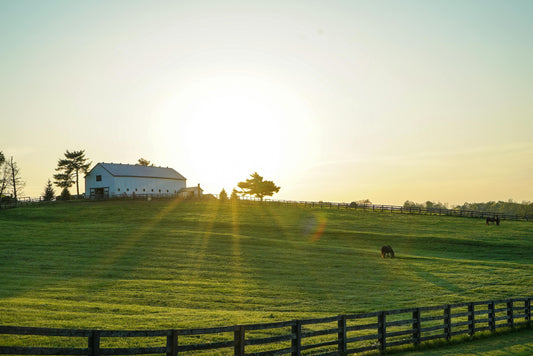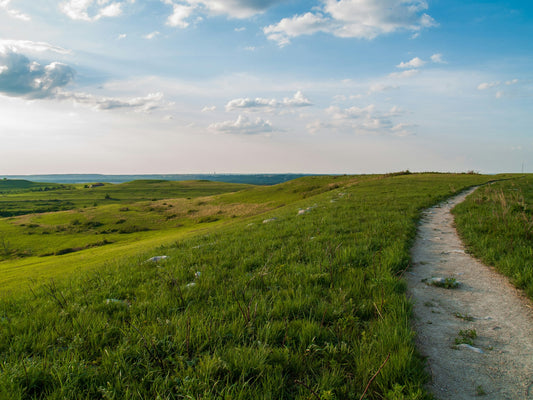Sleeping High: What You Need to Know
Sleep is a complex, essential process to maintaining our well-being. Our night's sleep is typically made up of four to six 90-minute sleep cycles per night, but often, due to several factors in and out of our control, many struggle to have a good night's sleep.
Recent reports suggest that up to 75% of older adults experience insomnia symptoms [1]. Such variations in our sleep patterns have led to ample research into the quality and quantity of our sleep and the disorders associated with a lack of quality sleep.
With many adults failing to reach the recommended 7 to 8 hours of sleep per night, sleep aids are commonly used. Cannabis is rapidly gaining as a sleep aid for many as legalization spreads across the US and beyond. With numerous positive clinical and anecdotal reports, many believe this natural substance can positively impact their sleep and overall well-being.
But what happens when you go to sleep high? Read on to discover the answer, as well as other potential benefits, drawbacks, and essential information you should know about sleeping on cannabis.
Is Cannabis a Sleep Aid?
Cannabis is a sleep aid for many adult consumers. But, like any product, buyers should be aware of the potential benefits and drawbacks before using cannabis as a sleep aid.
Sleep aids include natural options, such as chamomile, lavender, ashwagandha, melatonin, and others. Several pharmaceutical sleep aids exist as over-the-counter or prescribed choices. They include benzodiazepines like Valium and Xanax as well as sleep-specific drugs like Ambien and Lunesta.
Cannabis's potential as a sleep aid began to gain steam several decades ago in the 1970s as cannabis culture swept the US. Today, we understand that the plant contains several relaxation or sleep-promoting effects [2].
Often, newcomers incorrectly associate these effects with certain cannabis strains, THC potency, or the plant's classification as an indica or sativa. However, much of the attribution goes to the various compounds found within the plant, namely its cannabinoid and terpene content [3] [4].
Depending on their dosage, CBD and THC are often associated with relaxation, sleep effects, and many other outcomes depending on a strain's plant profile [5] [6]. Compounds, like the cannabinoid CBG, are considered effective in promoting sleep and relaxation [7].
Many terpenes, the oily, frosty-looking compounds found on the cannabis plant, are associated with similar effects. Terpenes are central in determining a plant's flavor, aroma, and effects. Terpenes most often associated with sleep and relaxation effects include myrcene, terpinolene, and caryophyllene [8] [9] [10].
What Happens When You Go to Sleep High?
Going to sleep high may seem simple, but understanding its effects is rather complex.
We're only now beginning to clinically understand what happens to a person's sleep if they go to bed high.
Federal prohibition and a ban on clinical research limited our understanding for decades, but thankfully, those days are changing as legalization spreads across the globe. Still, with countless strains and plant profiles to consider, a world of answers appears to be incrementally taking shape.
Plant Compounds, Dosage and the Endocannabinoid System
Many factors appear to play critical roles in how cannabis affects our sleep. THC and CBD are the primary cannabinoids in the plant, with each producing unique outcomes on sleep. Cannabinoids and other compounds are influenced by their interaction with the body's endocannabinoid system, an elaborate network of receptors and transmitters found throughout the brain and body [11].
For example, THC produces what many consider to be called a high, or a psychoactive effect. CBD has little to no psychoactive effect, instead creating a subtle effect without any of the associated results of a high, such as altered motor skills, heightened senses, or distortions in time.
The ECS is critical in daily essential bodily functions, including sleep. Introducing THC or CBD to the process can have various effects on the outcome. Dosage appears to be a critical component of each cannabinoid.
With CBD, it is believed that higher doses may help reduce stress hormones like cortisol, which may make it easier to fall asleep [12]. Similar reports have been attributed to low THC strains. However, high THC strains and low-dose CBD have been associated with increased energy levels at times.
THC and Sleep Cycles
A human's sleep cycle is made up of four stages involving two types of sleep: rapid eye movement (REM) sleep and non-rapid eye movement (NREM) sleep.
NREM makes up the first three stages of sleep, increasing from light to deep sleep. During the first two stages, our muscle activity lessens, body temperature decreases, and brain waves slow down, except for short periods of rapid activity. By stage three of NREM, we enter deep sleep associated with repairing and growing our bodies.
The fourth stage is REM sleep when humans experience increased brain activity and eye movement, as well as muscle paralysis and vivid dreams. Much like how stage three helps build and restore our bodies, REM sleep plays a critical role in our cognitive functions, memory, and emotions.
The longer we spend in stage four, the more likely we will feel ready and refreshed the following day.
Cannabis’ impact on the sleep cycles has become a topic of significant interest. Much like dosage and its effects on sleep, research has suggested that our frequency and length of use can play a drastic role.
THC has been linked to increased stays in REM sleep when used in short periods [13]. However, prolonged THC consumption is associated with decreased stays in stage four [14]. This result is why many claim that weed stops people from dreaming. Less REM sleep is primarily considered adverse but has been associated with positive sleep results for individuals with PTSD and others experiencing traumatic visions in their dreams.
More so, the concern centers around how a lack of time in REM sleep can impact a person’s cognition, memory, and emotions over a prolonged period. This effect has led many consumers to try CBD-dominant cannabis strains or ratioed products that offer two or more cannabinoids in varying dosages.
Prolonged, high-dose THC use has been linked to additional adverse outcomes, including:
- Increased tolerance to sleep aids and sedatives
- Decreased sleep
- Extended periods before falling asleep
- Frequently waking up
- Increased grogginess
- Decreased mental cognition
The findings so far require additional clinical analysis, leading some to believe the listed outcomes above are a worst-case scenario for most. Unlike many sleep aids, especially prescription options, cannabis has never been associated with an overdose death.
Additionally, with cannabis addiction rates well below those of prescription drugs and many other substances, it is believed that the plant presents a significantly lower harm profile while offering ample potential to improve someone’s sleep [15].
Despite the potential impact on REM sleep, many turn to cannabis as a natural sleep remedy. While possibly beneficial, consumers need to remember that every strain is different. So, too, is the person consuming the product. Just because one individual responds to cannabis a particular way doesn’t mean that the result will necessarily occur in others.
Additional lab research should provide further clarity in the years to come. But for now, consumers need to be aware: Understanding the plant profile and dosage is critical to creating the ideal outcome.
Cannabis as a Sleep Aid
We continue to further our understanding of the relationship between cannabis and sleep. As additional clinical research is published, those findings will join with previous research and years of anecdotal feedback to comprehensively understand this complex, multifaceted subject.
We know so far that people need to sleep, and many aren't getting enough of it. At the same time, cannabis has proven itself to relax minds and bodies, often leading to increased sleep. Still, we must understand the potential short and long-term impact of using cannabis.
Research into the effects of cannabinoids like THC, CBD, CBG, and others on our sleep cycle will no doubt be ongoing. Cannabis's impact on NREM and REM sleep cycles is essential to our knowledge of the plant and its effect on sleep.
Understanding the varied individual responses people have to cannabis is critical. At this point, we know that precise dosing and specific compounds are crucial in producing ideal relaxation and sleep effects. Now, the goal is to get the public to become fully aware of these opportunities and potential setbacks.
Cannabis, no doubt, has shown immense promise as a natural sleep remedy. However, with many factors surrounding the plant and our bodies, consumers must approach the subject responsibly. Educating yourself is always the best step.
Consider coupling your research with discussions with trusted medical professionals to understand the situation entirely. As the legal and medical landscapes surrounding cannabis evolve, we must continue to update our understanding of this comprehensive subject.
It isn't easy to fully encapsulate a nuanced topic like what happens when we go to sleep too high. But we are incrementally gaining further understanding of this subject. At this time, we know that many people turn to cannabis to make sleep more simple and enjoyable.
With hope, continued clinical analysis will provide further assurance for those interested in using cannabis to aid their sleep.
Citations
- Insomnia in Older Adults https://www.ncbi.nlm.nih.gov/pmc/articles/PMC7731454/
- Cannabidiol in Anxiety and Sleep: A Large Case Series https://www.ncbi.nlm.nih.gov/pmc/articles/PMC6326553/
- Effects of Cannabinoids on Sleep and their Therapeutic Potential for Sleep Disorders https://www.ncbi.nlm.nih.gov/pmc/articles/PMC8116407/
- The Cannabis Terpenes https://www.ncbi.nlm.nih.gov/pmc/articles/PMC7763918/
- Cannabidiol in Anxiety and Sleep: A Large Case Series https://www.ncbi.nlm.nih.gov/pmc/articles/PMC6326553/
- The Effects of Cannabinoids on Sleep https://www.ncbi.nlm.nih.gov/pmc/articles/PMC9036386/
- Survey of Patients Employing Cannabigerol-Predominant Cannabis Preparations: Perceived Medical Effects, Adverse Events, and Withdrawal Symptoms https://pubmed.ncbi.nlm.nih.gov/34569849/
- Central effects of citral, myrcene and limonene, constituents of essential oil chemotypes from Lippia alba (Mill.) n.e. Brown https://pubmed.ncbi.nlm.nih.gov/12587690/
- Sedative effects of vapor inhalation of the essential oil of Microtoena patchoulii and its related compounds https://pubmed.ncbi.nlm.nih.gov/21287406/
- The anxiolytic-like effect of an essential oil derived from Spiranthera odoratissima A. St. Hil. leaves and its major component, β-caryophyllene, in male mice https://www.sciencedirect.com/science/article/pii/S027858461200084X
- The endocannabinoid system: Essential and mysterious https://www.health.harvard.edu/blog/the-endocannabinoid-system-essential-and-mysterious-202108112569
- Cannabidiol in humans-the quest for therapeutic targets https://pubmed.ncbi.nlm.nih.gov/24281562/
- Using Cannabis As A Sleep Aid https://www.sleepfoundation.org/sleep-aids/cannabis-and-sleep
- Sleep Disturbance in Heavy Marijuana Users https://www.ncbi.nlm.nih.gov/pmc/articles/PMC2442418/
- Evidence shows that cannabis has fewer relative harms than opioids https://www.ncbi.nlm.nih.gov/pmc/articles/PMC7030877/









